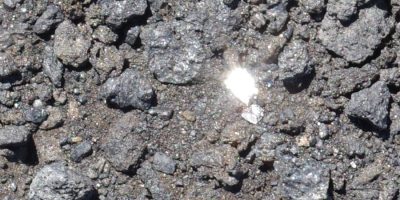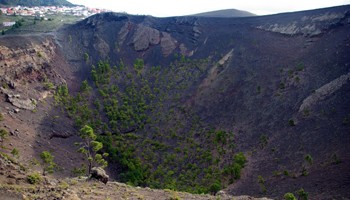Glitter stones
I went for a walk at Llano de los Jables, near to where I found the tiny, red plants just before Easter. The landscape was stunning, especially the cloud waterfall. But the most memorable thing I discovered was quite a large area where stars glimmered on the ground, like very, very thinly-spread glitter. And like glitter, the stars tended to wink on and off. Of course I investigated. I know…


